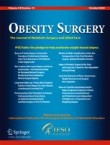By Bruce Blackshaw and Perry Hendricks
Why is it immoral to deliberately give a fetus fetal alcohol syndrome (FAS)? In our paper Strengthening the Impairment Argument Against Abortion, we provided one possible answer: it is wrong because it deprives the fetus of a future of value. In other words, the future of an unimpaired fetus is more valuable than its future after being impaired by FAS. Using this explanation, we tried to strengthen Perry Hendricks' impairment argument, which purports to derive the immorality of abortion from the immorality of non-lethally impairing a fetus (e.g. by giving it FAS). Basically, Hendricks argues that since it is immoral to non-lethally impair a fetus, it is also immoral to lethally impair a fetus, since that's more severe.
Some critics objected to Hendricks' argument by claiming that there are important differences between abortion and non-lethally impairing a fetus. For example, abortion can achieve valuable goods that non-lethal impairment can't, such as avoiding a burdensome pregnancy. By explaining the wrongness of non-lethal impairment by deprivation of a future of value, we tried to solve this problem. The idea was this: since the reason non-lethally impairing a fetus is immoral (i.e. it deprives the fetus of a future of value) is also present in cases of abortion (i.e. aborting a fetus deprives it (even more) of a future of value), there are no important differences. In other words, since the reason for the wrongness of non-lethal impairment is also present in cases of lethal impairment, it is sufficient to show that abortion is immoral. No other facts are relevant.
Unfortunately, things weren't as simple as we'd hoped: Dustin Crummett and Alex Gillham raised distinct, serious objections to our argument. The project of this essay is to answer their criticisms by fine-tuning the principles we made use of.
Crummett showed that if a lethal impairment was justified (for example, because it saved lives), then a principle our argument relies on is false. However, we show that the principle in question can be easily amended to circumvent this problem.
Gillham criticized our use of the deprivation of a future of value to explain the wrongness of non-lethal impairment. He argued that this explanation fails because there are some cases in which a fetus doesn't have a future of which it can be deprived. He also claims that if we explain the wrongness of non-lethal impairment in terms of a deprivation of a future of value, our argument doesn't add anything significant to the abortion debate: it will ultimately reduce to Don Marquis' well-known argument against abortion.
On Gillham's first point, we show that there are very few cases in which his criticism is relevant: in the vast majority of abortions, the fetus has a future of value. And so, his criticism is inconsequential. And secondly, we show that our argument does not reduce to Marquis' argument. In fact, it can succeed even if Marquis' argument fails. Additionally, we use a future of value merely as a possible explanation of the wrongness of non-lethal impairment. This alone is sufficient to show that our argument doesn't reduce to his.
We are grateful to our critics for pointing out these difficulties our argument faces and forcing us to revise our views. The result, we believe, is a more robust argument for the immorality of abortion. Our only regret is that we had not discovered these issues sooner!
Paper title: Fine-Tuning the Impairment Argument
Author(s): Bruce P. Blackshaw*, Perry Hendricks**
Affiliations: * University of Birmingham, United Kingdom. ** Purdue University.
Competing interests: None
The post Fine-tuning the impairment argument against abortion appeared first on Journal of Medical Ethics blog.







